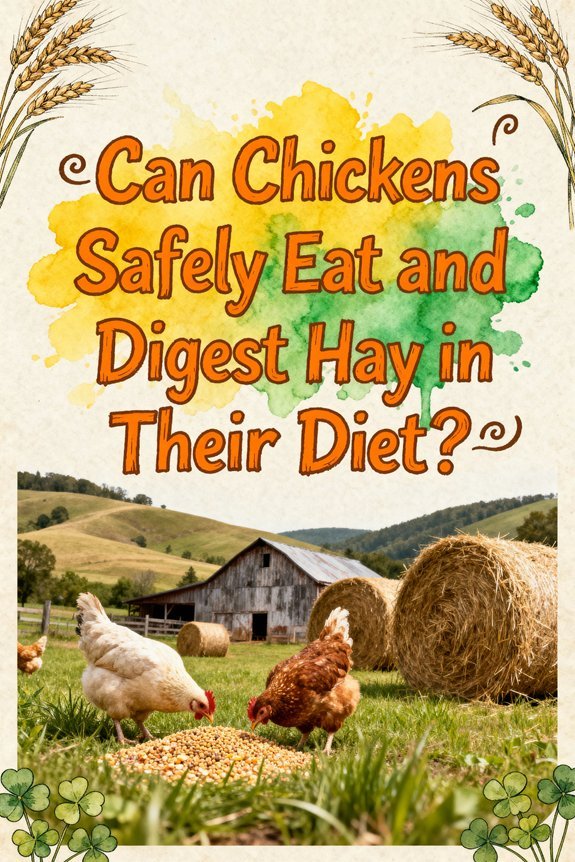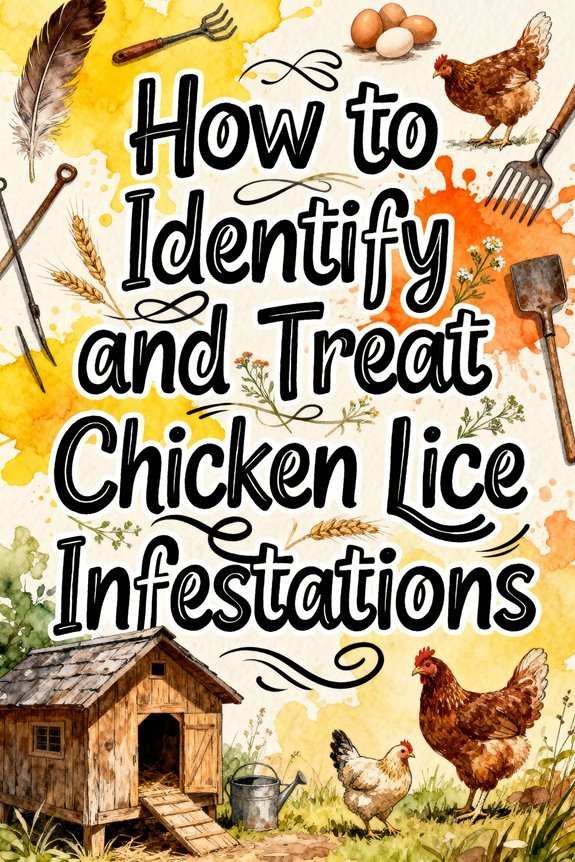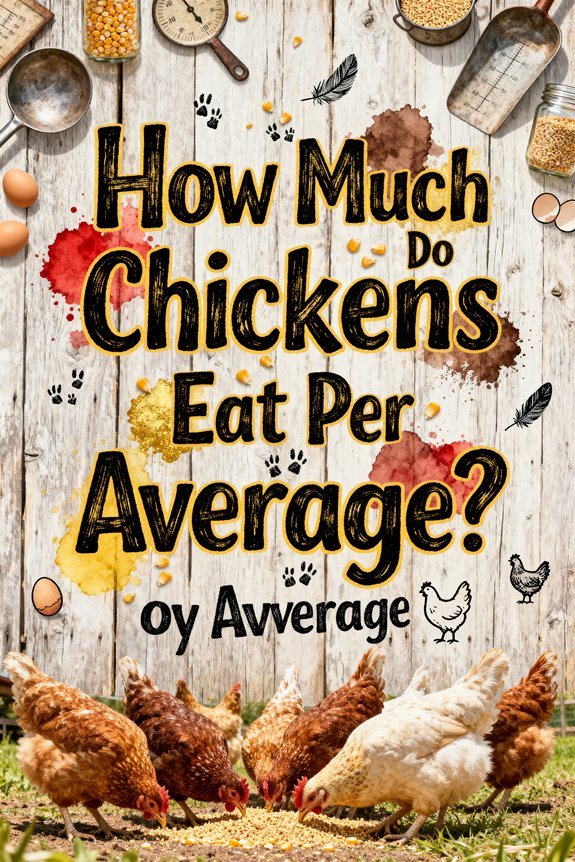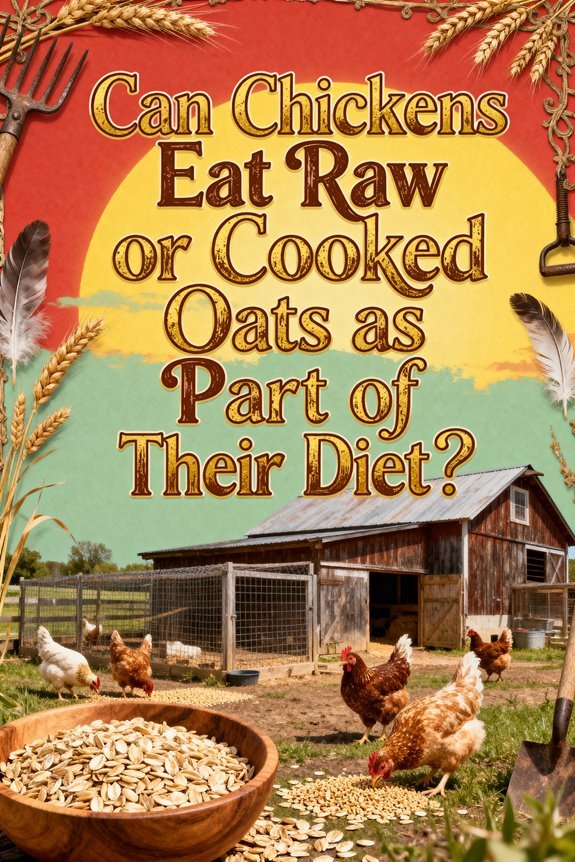Can Chickens Safely Eat and Digest Hay in Their Diet?
While your chickens can safely consume hay, particularly alfalfa hay, they won’t digest it as efficiently as ruminant animals due to their limited ability to break down cellulose fiber. You’ll need to provide adequate grit to help their gizzards process the hay and limit servings to once or twice weekly. Though hay offers vitamins A, D, E, and minerals, it shouldn’t be a primary feed source. Understanding proper hay integration can maximize its nutritional benefits for your flock.
Understanding Hay’s Safety and Digestibility for Chickens
While chickens can physically consume hay, their digestive system processes it quite differently from grazing animals like cattle or horses. When your chickens eat hay, it first enters their crop for initial soaking, then moves to the gizzard where mechanical breakdown occurs with the help of grit and strong muscles. Digestive enzymes and acid from the stomach further assist in breaking down any digestible components. However, hay digestion presents significant digestive challenges due to chickens’ limited ability to break down cellulose fiber.
Unlike ruminants, chickens don’t have complex foregut fermentation. Their ceca can ferment some fiber, but this only contributes up to 15% of their daily energy needs. Without sufficient grit, hay particles remain poorly ground, potentially causing crop impaction or blockages. The high fiber content mostly passes through undigested, making hay a relatively inefficient feed source for your chickens’ nutritional needs.
Nutritional Benefits and Limitations of Hay in Chicken Feed
Although hay offers several nutritional components beneficial for chickens, its role in poultry nutrition requires careful consideration of both advantages and limitations. The hay nutrient profile includes essential vitamins A, D, and E, along with minerals like calcium and phosphorus. You’ll find particularly high nutritional value in alfalfa hay, which contains 15-20% crude protein and beneficial carotenoids that enhance egg yolk color. Experts recommend keeping hay portions to one to two servings weekly to maintain proper dietary balance.
However, your hay feeding strategies must account for significant nutritional gaps. While hay provides fiber for gut health and moderate energy levels, it can’t substitute for complete feeds due to insufficient amino acids and vitamin B12. You’ll need to maintain hay as a supplement rather than a primary feed source, ensuring proper balance with other nutrients to avoid potential mineral imbalances, particularly with calcium-to-phosphorus ratios.
Best Practices for Feeding Hay to Your Flock
To maximize the nutritional and behavioral benefits of hay in your flock’s diet, you’ll need to implement specific feeding protocols that prioritize safety and effectiveness. Choose clean, dry alfalfa hay as one of the best hay varieties, but provide it in controlled amounts rather than free-choice to prevent spoilage and overconsumption.
Installing an electric heating stand near hay feeding areas helps maintain unfrozen water access during winter months. Establish a feeding frequency that allows for regular rotation of hay materials while monitoring your chickens’ response. Place hay strategically in runs to encourage natural foraging behavior, and guarantee it’s stored in well-ventilated areas to prevent mold growth. You’ll want to integrate hay feeding with your flock’s primary commercial feed while maintaining proper calcium supplementation. Keep feeding areas clean and inspect hay thoroughly for contaminants, removing any that shows signs of mold or chemical treatment.
How Hay Supports Digestive Health in Chickens
Hay’s role in supporting chicken digestive health extends far beyond basic nutrition. The high fiber content actively stimulates gut motility, preventing impacted crops and constipation while promoting efficient nutrient absorption. You’ll find that hay’s prebiotic properties foster beneficial gut bacteria, strengthening your flock’s digestive system against pathogens. Saponins in hay naturally repel harmful pests through chicken droppings, creating a healthier digestive environment. Providing insoluble grit alongside hay helps chickens properly grind and digest the fibrous material in their gizzards.
The fiber benefits are particularly notable in aging chickens, as it helps maintain villi size for peak nutrient uptake. Essential vitamins and minerals in hay support digestive organ function, while omega-3 fatty acids reduce gut inflammation. When you provide hay regularly, you’re enhancing your chickens’ gut health through improved intestinal repair, regulated bowel movements, and enhanced nutrient extraction. This thorough support system guarantees your flock maintains robust digestive efficiency and overall wellness. While hay offers benefits, remember that quality layer feed should remain the primary component of your chickens’ diet.
Choosing Between Hay, Haylage, and Straw for Your Chickens
When selecting bedding and forage materials for your chickens, understanding the distinct properties of hay, haylage, and straw becomes essential for best flock management. While straw’s hollow stems and low moisture content make it your ideal choice for bedding and nesting material, hay serves better as a supplemental forage. You’ll find that straw’s superior insulation properties and resistance to mold create a safer, more comfortable environment for your flock.
To minimize feed waste, consider using dried grass bales for controlled portions. For hay storage, maintain small quantities to prevent spoilage and dust accumulation. Among hay alternatives, haylage isn’t recommended due to its high moisture content and fermentation characteristics. If you’re offering hay as enrichment, choose alfalfa hay, as chickens find its leafy texture more palatable than grass hay. Remember to monitor consumption to prevent digestive issues.



